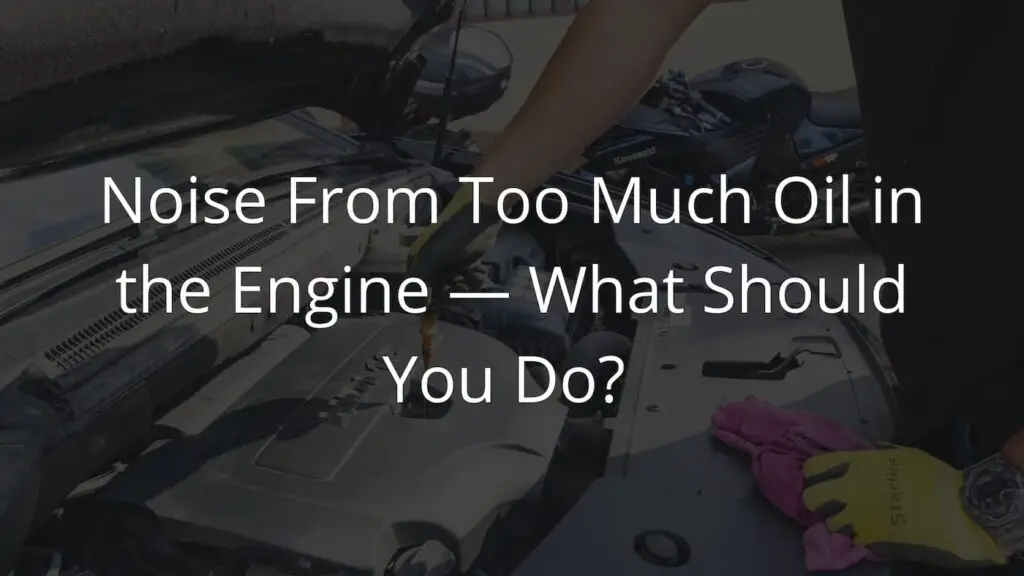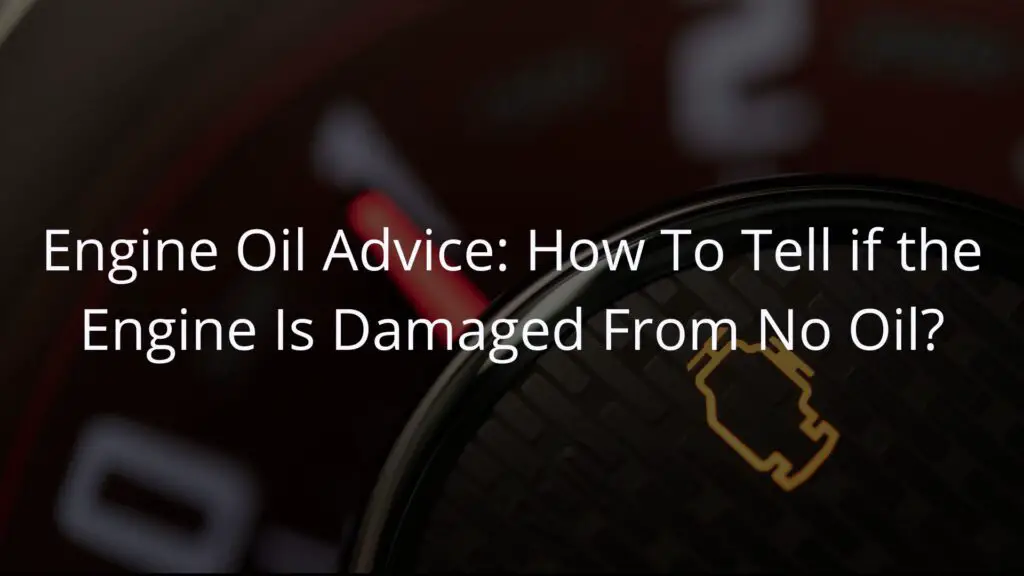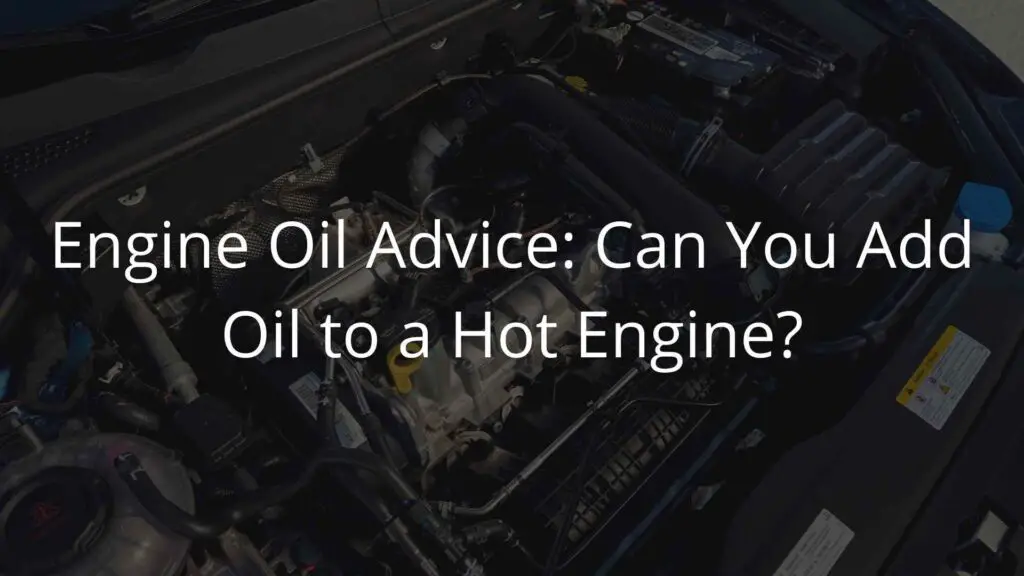Are you experiencing strange clattering noises from your vehicle’s engine? Is your engine malfunctioning?
Well, you need to check the engine oil level. Too much oil in the engine can damage your vehicle. From hard starts to engine smoke, too much oil is a serious problem.
Read on to learn more about common problems due to an overfilled engine and what you can do to drain extra engine oil:
When Is the Engine Too Full?
You can use an engine oil dipstick to find out if you have overfilled the engine oil. If the oil exceeds 1/8th of an inch above the high mark on the dipstick, the oil level is too high, and you should drain the excess oil.
Measuring Oil Level Through Dipstick
You can measure oil level using an engine oil dipstick by following these simple steps:
- Take out the engine oil dipstick.
- Clean the stick and dip it back inside.
- Take it out after a few seconds and measure the oil level through the scale.
- If the oil level is below LOW, you have low or no engine oil and need to add more engine oil.
- If the oil level is above HIGH, you have overfilled your engine and need to drain some oil.
Overfilled Engine Oil — Most Probable Symptoms
There are various signs that indicate your engine has excess oil.
- Oil leaks: Oil spills or leaks are frequently caused by an overfilled engine.
- Burning Oil Smell: When the excess oil spills in the form of oil puddles and touches a hot surface, it burns and produces a burning oil smell.
- Smoke from Engine: If you overfill engine oil, your engine won’t have the required lubrication. This can lead to overheating and the production of smoke.
- Black Exhaust Smoke: Excess engine oil often finds its way to the combustion chamber, where it burns along with the fuel. In such a case, you’d see black or blue exhaust smoke.
Overfilled Engine Oil: Problems
When overfilled, an engine suffers several problems:
Noisy Engine
Too much engine oil results in a noisy and inefficient engine. The engine produces rattling and clicking sounds that cause disturbance during driving.
If you overfill engine oil by one liter and start the engine, the engine will be covered by foam. The crankshaft will whip into the oil through the connecting rod and produce a rattling noise.
Crankshaft Friction
If you overfill the engine, the crankshaft has to overcome greater friction to move around. In other words, the crankshaft experiences a larger force during its motion, which can damage the crankshaft.
Improper Oil Flow
The excess oil results in improper oil flow. In other words, adding more oil than required doesn’t enhance lubrication.
It’s the opposite. The effective lubrication reduces due to excess oil and leads to the wear of the moving parts.
Foul Spark Plug
The excess oil turns into a frothy substance. Not only does it contribute to the wear of the moving parts, but it also damages them.
For instance, excess oil often gets inside the spark plug, making it difficult for your car to start. You might even have to replace the spark plugs.
How To Correct the Oil Level of the Engine?
If there is too much oil and the car is not starting, you should drain the excess oil. But how can you do that?
We’ve got you covered.
Read on to find out the two most effective methods to drain excess engine oil:
Method 1: Oil Drainage via Drain Plug
This is the simplest method of taking out the surplus oil from the engine. All you have to do is to drain the oil and bring the engine oil level down to normal.
Tool Required
- Wrench
- Oil container
1. Locate the Drain Plug
You can find the drain plug under the vehicle on the oil pan as seen below:
2. Place the Oil Container Under It
Place the oil container below the drain plug. This container will act as the oil storage space and let you recycle the excess engine oil.
3. Open the Drain Plug
Open the drain plug partially.
4. Let Oil Drain
Let the oil drain for a few seconds, and close the drain plug.
Recheck the engine oil level and see if it has returned to normal.
If the oil level is still high, open the drain plug again. Otherwise, move on to the next step.
5. Close the Drain Plug
Once you’ve drained the excess oil, close the drain plug. Ensure the plug is tightly closed.
Measure the oil quantity after a couple of minutes as engine oil might take some time to settle.
Drain the oil if it’s still overfilled, or add more if you drain more engine oil than required.
Method 2: Extractor Pump
You can also easily use an extractor pump to remove the excess engine oil.
Tool Required
- Extractor Pump
Warm Up Engine Oil
When using the extractor pumps, make sure that the oil is warm. This will help you increase the pump’s performance. To increase the engine oil temperature, leave the vehicle on for a few minutes.
Insert the Pump Tube
Insert the pump tube into the dipstick hole. In other words, remove the dipstick and insert the pump tube in its place.
Start Extractor Pump
Once the tube touches the bottom, start the pump. Make sure to pump out the desired quantity of oil.
However, you can always remove more engine oil than required as you can easily add it back.
Remove the Pump Tube
Take the tube out when you’re done. Make sure to spread a cloth around the hole to avoid a mess.
Measure the oil quantity again. If you remove more engine oil than required, add more engine oil, and vice versa.
Final Thoughts: Too Much Oil in Engine Sound — Symptoms and Causes
If you overfill the engine, it produces clattering noises and damages the engine parts. To avoid this, take care when adding engine oil and check your engine oil if you hear any clattering noise.
If you find excess oil in the engine, you can easily remove it via one of the methods above.
For more engine-oil-related information, explore our blog today.



